Balkinization
an unanticipated consequence of
Jack M. Balkin
Balkinization Symposiums: A Continuing List
E-mail:
Jack Balkin:
jackbalkin at yahoo.com
Bruce Ackerman
bruce.ackerman at yale.edu
Ian Ayres
ian.ayres at yale.edu
Corey Brettschneider
corey_brettschneider at brown.edu
Mary Dudziak
mary.l.dudziak at emory.edu
Joey Fishkin
joey.fishkin at gmail.com
Heather Gerken heather.gerken at yale.edu
Abbe Gluck abbe.gluck at yale.edu
Mark Graber
mgraber at law.umaryland.edu
Stephen Griffin
sgriffin at tulane.edu
Jonathan Hafetz
jonathan.hafetz at shu.edu
Jeremy Kessler
jkessler at law.columbia.edu
Andrew Koppelman
akoppelman at law.northwestern.edu
Marty Lederman
msl46 at law.georgetown.edu
Sanford Levinson
slevinson at law.utexas.edu
David Luban
david.luban at gmail.com
Gerard Magliocca
gmaglioc at iupui.edu
Jason Mazzone
mazzonej at illinois.edu
Linda McClain
lmcclain at bu.edu
John Mikhail
mikhail at law.georgetown.edu
Frank Pasquale
pasquale.frank at gmail.com
Nate Persily
npersily at gmail.com
Michael Stokes Paulsen
michaelstokespaulsen at gmail.com
Deborah Pearlstein
dpearlst at yu.edu
Rick Pildes
rick.pildes at nyu.edu
David Pozen
dpozen at law.columbia.edu
Richard Primus
raprimus at umich.edu
K. Sabeel Rahmansabeel.rahman at brooklaw.edu
Alice Ristroph
alice.ristroph at shu.edu
Neil Siegel
siegel at law.duke.edu
David Super
david.super at law.georgetown.edu
Brian Tamanaha
btamanaha at wulaw.wustl.edu
Nelson Tebbe
nelson.tebbe at brooklaw.edu
Mark Tushnet
mtushnet at law.harvard.edu
Adam Winkler
winkler at ucla.edu
Compendium of posts on Hobby Lobby and related cases
The Anti-Torture Memos: Balkinization Posts on Torture, Interrogation, Detention, War Powers, and OLC
The Anti-Torture Memos (arranged by topic)
Recent Posts
The Erosion of War and Peace in International Law
Just A Few Blogs
ACS Blog
Alas, a Blog
Althouse
Arts and Letters Daily
Atrios (Eschaton)
Bill of Health
Buzzflash.com
Buzz Machine
Cato at Liberty
Juan Cole (Informed Comment)
Concurring Opinions
The Constitution in 2020
Corrente
Crooked Timber
Daily Howler
Daily Kos
Dana Boyd
Brad DeLong
Digby (Hullabaloo)
Discriminations
Daniel Drezner
Kevin Drum (Mother Jones)
Electrolite
En Banc
Eunomia (Daniel Larison)
Fafblog
Michael Froomkin (Discourse.net)
GovLab (Beth Noveck)
Rick Hasen (Election Law)
History News Network
How Appealing
Ignatz (Sam Heldman)
The Importance of (Ernie Miller)
Infolaw
Instapundit
International Economic Law and Policy Blog
IntLawGrrls
Jacob Levy
Jesus' General
Jurisdynamics
The Kitchen Cabinet
Mark Kleiman
Law Blog Central
Larry Lessig
Lawyers, Guns and Money
Liberal Oasis
Brian Leiter's Law School Reports
The Leiter Reports
Marginal Revolution
Megan McArdle
Memeorandum
Metafilter
Mirror of Justice
The New Republic
Newseum
No More Mister Nice Blog
Brendan Nyhan
Opinio Juris
Orcinus
The Originalism Blog
Pandagon
Passport (Foreign Policy)
Overcoming Bias
Political Animal (Washington Monthly)
Political Theory Daily Review
Political Wire (Taegan Goddard)
The Poor Man
Virginia Postrel
Prawfsblawg
Public Reason
Jonathan Rauch
Raw Story
Redstate
ReligiousLeftLaw.com
Reporters Committee For Freedom of the Press
Reproductive Rights Blog
Rothman's Roadmap to the Right of Publicity
SCOTUS Blog
Seeing the Forest
Clay Shirky
The Shifted Librarian
The Situationist
Larry Solum (Legal Theory)
Andrew Sullivan
Talking Points Memo
Talk Left
Tapped
Tbogg
TechPresident
The Paper Chase (Jurist)
Tom Paine
Tom Tomorrow (This Modern World)
Eve Tushnet
Uggabugga
University of Chicago Law School Faculty Blog
Unqualified Offerings
The Volokh Conspiracy
War and Piece (Laura Rozen)
Wampum
Oliver Willis
Wonkette
Written Description
Matthew Yglesias
Yin
Your Choice of Feeds
1. XML
powered by
2. Atom Feed
3. RSS 2.0
Wednesday, February 06, 2013
The Erosion of War and Peace in International Law
Mary L. Dudziak
From the AALS Panel on The Concept of Peace in Law, Culture and Society:
International Law Beyond War and Peace
RutiTeitel, Straus
Fellow, NYU Law School (2012-2013); Ernst
C. Stiefel Prof of Comparative Law, NY
Law School
In general, in international
law, the distinction between the state of war and the state of peace is
becoming less relevant, or at least less determinative of the applicable
legal norms. This produces new challenges of interpretation and new
trade offs in the relation between law and politics.
The following are three illustrations of what has been happening.Teitel, Humanity's Law
1. First is the question of when does international criminal justice come into
the picture? At Nuremberg, international criminal responsibility was conceived as
fundamentally part of ius post bellum, something that occurs at the end of
hostilities. In a way, it took the place
of the kind of collective punishment that became questionable in the wake of
the Versaille Treaty.
Today international criminal
justice has a transformed functionality, coming into play during
conflict, before the peace, and even ex ante (the case of Libya, where
referrals to the ICC preceded military intervention in the conflict);
indeed it is used as means of regulating conflict itself. We don't need
to know whether conflict has ended.
This began with the
Balkans war where the International Criminal Tribunal for the former
Yugoslavia (ICTY) was created during the conflict by the Security
Council and where its jurisdiction to create a tribunal was its
peacemaking powers under the UN Charter chapter 7, and where the very
stated aim of the law is to regulate the conflict and to restore the
peace. Since then this has been reiterated in the ICC Statute.
The
introduction of international criminal law during conflict raises the
peace versus justice dilemma. What if the prospect of criminal justice
intensifies the conflict or makes peace negotiations more difficult
(e.g. Quaddaffi in Libya?)? The flip side is the politicization of law,
where
criminal prosecutions or the threat of them is used to achieve specific
strategic political objectives such as may well have been the case vis
avis Milosevic’s indictment at the time of the Dayton negotiations.
The
second illustration is that it is now rather well established that
international human rights law does not apply only in peacetime.
Continue reading below the fold.
Here
consider the treatment of this matter by the International Court of
Justice (ICJ) in its advisory opinion on the security fence between
Israel and the territories; whether and which norms -- human rights or
humanitarian law -- apply cannot be determined simply on the basis of
whether there is peace or war, and if war, internal or international
conflict. Obviously, the determination of the existence of a state of
war is still important to how these norms or regimes interact, and
whether humanitarian law trumps as a lex specialis (for example
permitting the targeting of combatants, which would deviate from the
basic norms of human rights).
Hence in the language of the ICJ, it asserted in that
case, “In the Court’s consideration of whether or not the construction of the
wall is contrary to international law, the Court determines the rules and principles
of international law which are relevant to the question posed by the General
Assembly. The Court begins by citing, with reference to Article 2,
paragraph 4, of the United Nations Charter and to General Assembly resolution 2625 (XXV),
the principles of the prohibition of the threat or use of force and the
illegality of any territorial acquisition by such means, as reflected in
customary international law. It further cites the principle of self‑determination
of peoples, as enshrined in the Charter and reaffirmed by
resolution 2625 (XXV). As regards international humanitarian
law, the Court refers to the provisions of the Hague Regulation of 1907, which
have become part of customary law, as well as the Fourth Geneva Convention
relative to the Protection of Civilian Persons in Time of War of 1949,
applicable in those Palestinian territories which before the armed conflict of
1967 lay to the east of the 1949 Armistice demarcation line (or “Green
Line”) and were occupied by Israel during that conflict.” The Court
further notes that certain human rights instruments (International Covenant on
Civil and Political Rights, International Covenant on Economic, Social and
Cultural Rights and the United Nations Convention on the Rights of the Child)
are applicable in the Occupied Palestinian Territory. According to the ICJ, “the protection offered by Human Rights
conventions does not cease in case of Armed conflict….”
While there
are pros and cons of the overlapping orders, indeed, it is not always clear
that applying international human rights law results in a more protective
standard -- because many international human rights are derogable and involve
considerations of other countervailing social interests. But the bigger point for our purposes is that
the line between war and peace which used to be the defining factor and predicate
for the choice of legal order, is no longer the critical divide; now given
judicialization of conflict, there is more overlapping legal protection.
Particularly to insure gap-filling in a number
of settings to assure a threshold of human security, indeed the shift is
elaborated upon in my new book, Humanity's Law.
Finally, a third and last illustration of the diminishing relevance of the
distinction between war and peace as the defining factor occasioning
individual legal responsibility under international law can now be seen in the
growing role of international criminal law within international law.
While in the past, e.g. Nuremberg, the
nexus to war was a critical dimension both as basis for jurisdiction
and for the substantive offense Now, international criminal responsibility is no longer measured in terms of war crimes: A range of crimes such as “crimes
against humanity” don't presuppose waging of armed conflict, nor a nexus to war. Starting with the post-cold war conflict in
Yugoslavia, crimes against humanity are applicable whether international or
internal armed conflict.
Now, the nexus has been further diluted as can be seen in
the permanent ICC Rome system, what triggers international criminal
responsibility can be triggered in peacetime -- enmeshing international criminal
law in more domestic situations. For
example, “crimes against humanity” at Article 5 now include a number of offenses associated
with peacetime repression and discrimination, so long as there is a “widespread or systematic attack directed
against any civilian population, with knowledge of the attack,” e.g. apartheid, forced disappearances, and
which nevertheless, a matter for individualized criminal responsibility under
international law.
So for example, post-election violence in Kenya became the
subject of International Criminal Court supervision. What this means is that
international criminal law is becoming more and more enmeshed in more
situations of violence with consequences for potential conflict of laws as well
as conflict over ways to approach conflict resolution: e.g., transitional
justice, raising dilemmas of peace versus justice, i.e. whether prosecutions
should take precedence over peace.
In sum, these are just some illustrations of the destabilization of the war and
peace divide within international law. The interesting
question of why this is happening lies at the heart of Mary's book addressing
the changing nature of war and its political functions.
From my standpoint, the relevant question today is do we need to be rethinking
the relationship between war and peace -- the historical basis for this
importance which goes back to Hobbes; Or,
instead, ought we recognize that the war
/peace divide has become relativized in regards to other determinations
relating the evolving mix of normative goals at issue, including human security. The question for the future is whether there
can really be any re-establishment of a stable understanding of war and peace;
and even if we had it -- it would hardly be determinant of the mix of legal norms
and the evolving nature of security relevant today.
Posted
12:00 PM
by Mary L. Dudziak [link]
Books by Balkinization Bloggers

Gerard N. Magliocca, The Actual Art of Governing: Justice Robert H. Jackson's Concurring Opinion in the Steel Seizure Case (Oxford University Press, 2025)

Linda C. McClain and Aziza Ahmed, The Routledge Companion to Gender and COVID-19 (Routledge, 2024)

David Pozen, The Constitution of the War on Drugs (Oxford University Press, 2024)

Jack M. Balkin, Memory and Authority: The Uses of History in Constitutional Interpretation (Yale University Press, 2024)
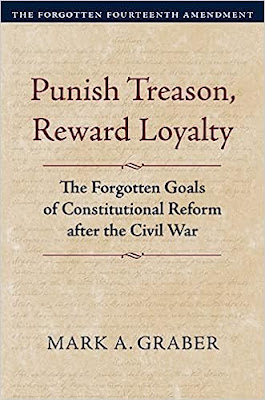
Mark A. Graber, Punish Treason, Reward Loyalty: The Forgotten Goals of Constitutional Reform after the Civil War (University of Kansas Press, 2023)
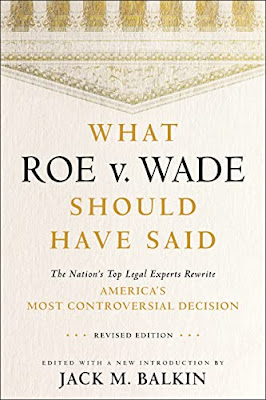
Jack M. Balkin, What Roe v. Wade Should Have Said: The Nation's Top Legal Experts Rewrite America's Most Controversial Decision - Revised Edition (NYU Press, 2023)

Andrew Koppelman, Burning Down the House: How Libertarian Philosophy Was Corrupted by Delusion and Greed (St. Martin’s Press, 2022)

Gerard N. Magliocca, Washington's Heir: The Life of Justice Bushrod Washington (Oxford University Press, 2022)
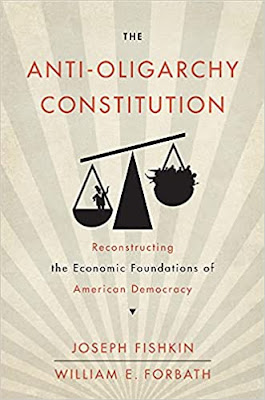
Joseph Fishkin and William E. Forbath, The Anti-Oligarchy Constitution: Reconstructing the Economic Foundations of American Democracy (Harvard University Press, 2022)
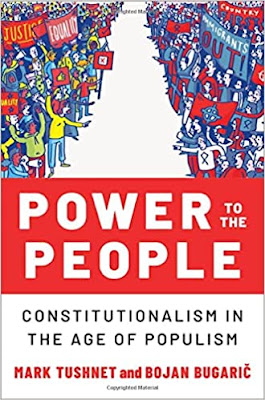
Mark Tushnet and Bojan Bugaric, Power to the People: Constitutionalism in the Age of Populism (Oxford University Press 2021).

Mark Philip Bradley and Mary L. Dudziak, eds., Making the Forever War: Marilyn B. Young on the Culture and Politics of American Militarism Culture and Politics in the Cold War and Beyond (University of Massachusetts Press, 2021).

Jack M. Balkin, What Obergefell v. Hodges Should Have Said: The Nation's Top Legal Experts Rewrite America's Same-Sex Marriage Decision (Yale University Press, 2020)

Frank Pasquale, New Laws of Robotics: Defending Human Expertise in the Age of AI (Belknap Press, 2020)

Jack M. Balkin, The Cycles of Constitutional Time (Oxford University Press, 2020)

Mark Tushnet, Taking Back the Constitution: Activist Judges and the Next Age of American Law (Yale University Press 2020).

Andrew Koppelman, Gay Rights vs. Religious Liberty?: The Unnecessary Conflict (Oxford University Press, 2020)

Ezekiel J Emanuel and Abbe R. Gluck, The Trillion Dollar Revolution: How the Affordable Care Act Transformed Politics, Law, and Health Care in America (PublicAffairs, 2020)

Linda C. McClain, Who's the Bigot?: Learning from Conflicts over Marriage and Civil Rights Law (Oxford University Press, 2020)
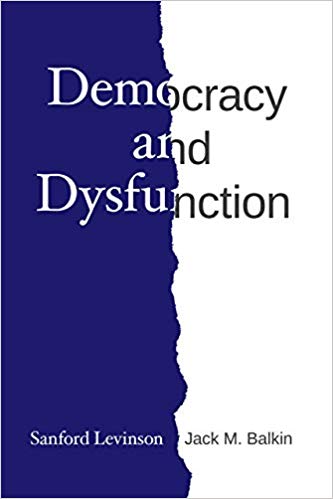
Sanford Levinson and Jack M. Balkin, Democracy and Dysfunction (University of Chicago Press, 2019)

Sanford Levinson, Written in Stone: Public Monuments in Changing Societies (Duke University Press 2018)

Mark A. Graber, Sanford Levinson, and Mark Tushnet, eds., Constitutional Democracy in Crisis? (Oxford University Press 2018)

Gerard Magliocca, The Heart of the Constitution: How the Bill of Rights became the Bill of Rights (Oxford University Press, 2018)

Cynthia Levinson and Sanford Levinson, Fault Lines in the Constitution: The Framers, Their Fights, and the Flaws that Affect Us Today (Peachtree Publishers, 2017)

Brian Z. Tamanaha, A Realistic Theory of Law (Cambridge University Press 2017)

Sanford Levinson, Nullification and Secession in Modern Constitutional Thought (University Press of Kansas 2016)

Sanford Levinson, An Argument Open to All: Reading The Federalist in the 21st Century (Yale University Press 2015)

Stephen M. Griffin, Broken Trust: Dysfunctional Government and Constitutional Reform (University Press of Kansas, 2015)

Frank Pasquale, The Black Box Society: The Secret Algorithms That Control Money and Information (Harvard University Press, 2015)

Bruce Ackerman, We the People, Volume 3: The Civil Rights Revolution (Harvard University Press, 2014)
Balkinization Symposium on We the People, Volume 3: The Civil Rights Revolution

Joseph Fishkin, Bottlenecks: A New Theory of Equal Opportunity (Oxford University Press, 2014)

Mark A. Graber, A New Introduction to American Constitutionalism (Oxford University Press, 2013)

John Mikhail, Elements of Moral Cognition: Rawls' Linguistic Analogy and the Cognitive Science of Moral and Legal Judgment (Cambridge University Press, 2013)

Gerard N. Magliocca, American Founding Son: John Bingham and the Invention of the Fourteenth Amendment (New York University Press, 2013)

Stephen M. Griffin, Long Wars and the Constitution (Harvard University Press, 2013)

Andrew Koppelman, The Tough Luck Constitution and the Assault on Health Care Reform (Oxford University Press, 2013)

James E. Fleming and Linda C. McClain, Ordered Liberty: Rights, Responsibilities, and Virtues (Harvard University Press, 2013)
Balkinization Symposium on Ordered Liberty: Rights, Responsibilities, and Virtues

Andrew Koppelman, Defending American Religious Neutrality (Harvard University Press, 2013)

Brian Z. Tamanaha, Failing Law Schools (University of Chicago Press, 2012)

Sanford Levinson, Framed: America's 51 Constitutions and the Crisis of Governance (Oxford University Press, 2012)

Linda C. McClain and Joanna L. Grossman, Gender Equality: Dimensions of Women's Equal Citizenship (Cambridge University Press, 2012)

Mary Dudziak, War Time: An Idea, Its History, Its Consequences (Oxford University Press, 2012)

Jack M. Balkin, Living Originalism (Harvard University Press, 2011)

Jason Mazzone, Copyfraud and Other Abuses of Intellectual Property Law (Stanford University Press, 2011)

Richard W. Garnett and Andrew Koppelman, First Amendment Stories, (Foundation Press 2011)

Jack M. Balkin, Constitutional Redemption: Political Faith in an Unjust World (Harvard University Press, 2011)

Gerard Magliocca, The Tragedy of William Jennings Bryan: Constitutional Law and the Politics of Backlash (Yale University Press, 2011)

Bernard Harcourt, The Illusion of Free Markets: Punishment and the Myth of Natural Order (Harvard University Press, 2010)

Bruce Ackerman, The Decline and Fall of the American Republic (Harvard University Press, 2010)
Balkinization Symposium on The Decline and Fall of the American Republic

Ian Ayres. Carrots and Sticks: Unlock the Power of Incentives to Get Things Done (Bantam Books, 2010)

Mark Tushnet, Why the Constitution Matters (Yale University Press 2010)
Ian Ayres and Barry Nalebuff: Lifecycle Investing: A New, Safe, and Audacious Way to Improve the Performance of Your Retirement Portfolio (Basic Books, 2010)
.jpg)
Jack M. Balkin, The Laws of Change: I Ching and the Philosophy of Life (2d Edition, Sybil Creek Press 2009)

Brian Z. Tamanaha, Beyond the Formalist-Realist Divide: The Role of Politics in Judging (Princeton University Press 2009)
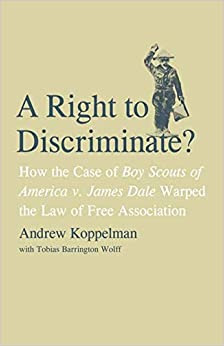
Andrew Koppelman and Tobias Barrington Wolff, A Right to Discriminate?: How the Case of Boy Scouts of America v. James Dale Warped the Law of Free Association (Yale University Press 2009)

Jack M. Balkin and Reva B. Siegel, The Constitution in 2020 (Oxford University Press 2009)
Heather K. Gerken, The Democracy Index: Why Our Election System Is Failing and How to Fix It (Princeton University Press 2009)

Mary Dudziak, Exporting American Dreams: Thurgood Marshall's African Journey (Oxford University Press 2008)

David Luban, Legal Ethics and Human Dignity (Cambridge Univ. Press 2007)

Ian Ayres, Super Crunchers: Why Thinking-By-Numbers is the New Way to be Smart (Bantam 2007)

Jack M. Balkin, James Grimmelmann, Eddan Katz, Nimrod Kozlovski, Shlomit Wagman and Tal Zarsky, eds., Cybercrime: Digital Cops in a Networked Environment (N.Y.U. Press 2007)
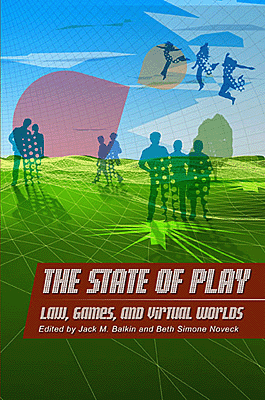
Jack M. Balkin and Beth Simone Noveck, The State of Play: Law, Games, and Virtual Worlds (N.Y.U. Press 2006)

Andrew Koppelman, Same Sex, Different States: When Same-Sex Marriages Cross State Lines (Yale University Press 2006)
Brian Tamanaha, Law as a Means to an End (Cambridge University Press 2006)
Sanford Levinson, Our Undemocratic Constitution (Oxford University Press 2006)
Mark Graber, Dred Scott and the Problem of Constitutional Evil (Cambridge University Press 2006)
Jack M. Balkin, ed., What Roe v. Wade Should Have Said (N.Y.U. Press 2005)
Sanford Levinson, ed., Torture: A Collection (Oxford University Press 2004)
Balkin.com homepage
Bibliography
Conlaw.net
Cultural Software
Writings
Opeds
The Information Society Project
BrownvBoard.com
Useful Links
Syllabi and Exams